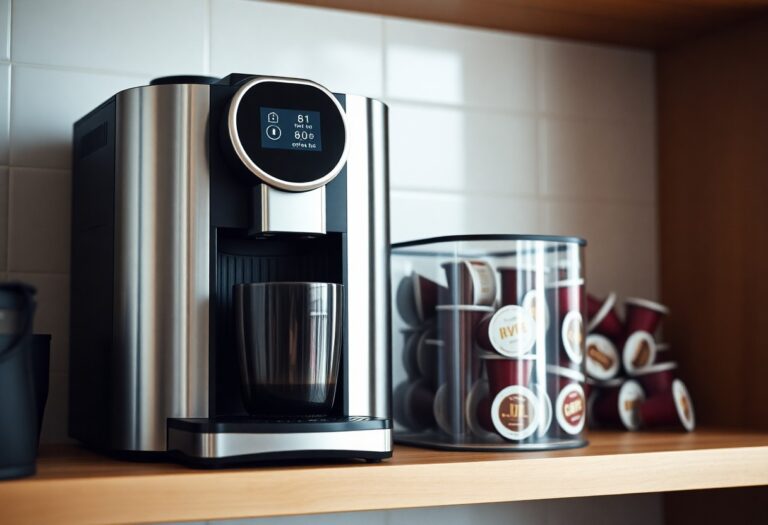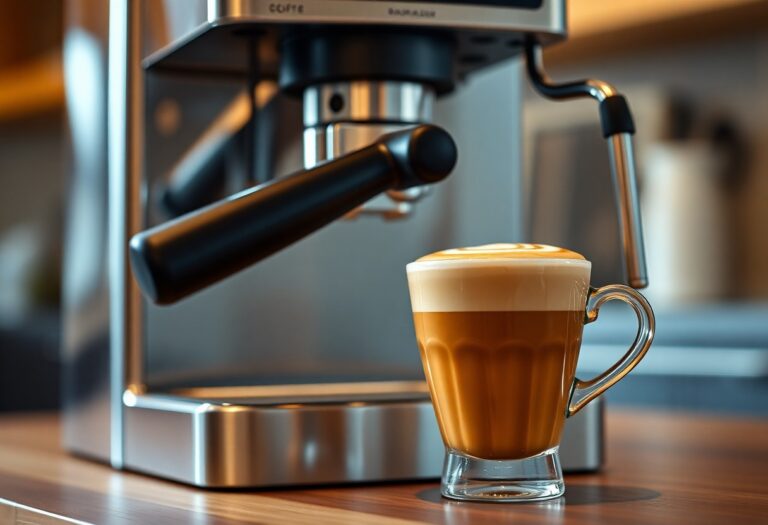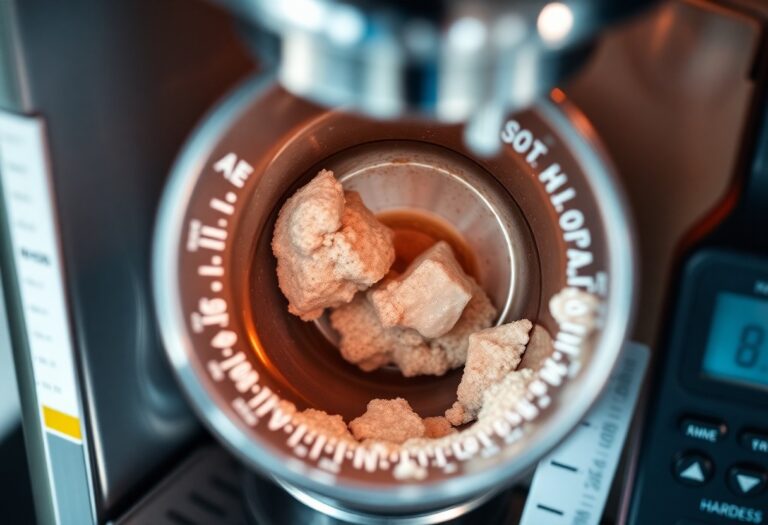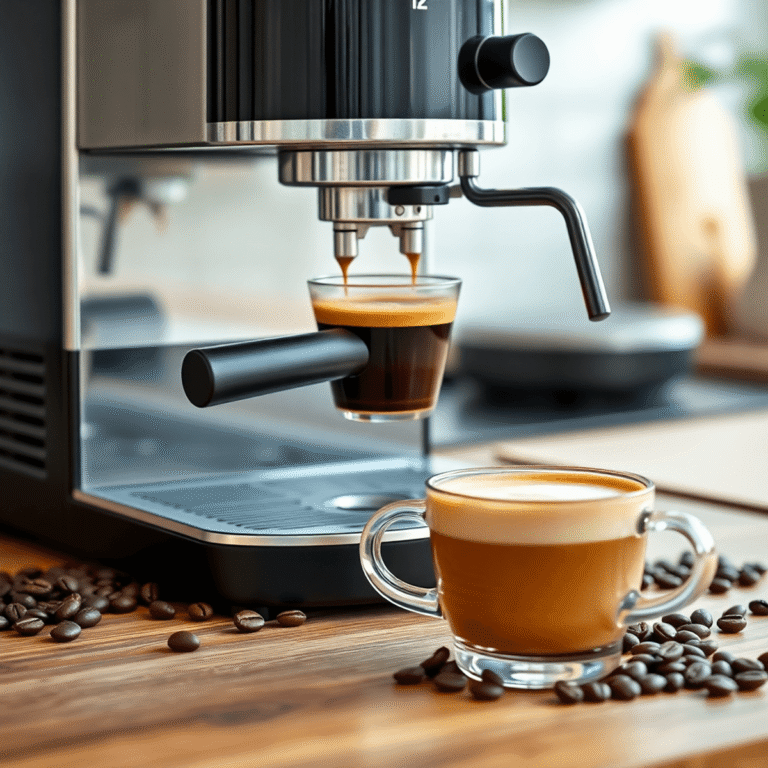What Ground Coffee for an Espresso Machine – Grind Specifications
Just understanding the right grind for your espresso machine can elevate your coffee experience significantly. Selecting the appropriate grind size plays a vital role in achieving optimal extraction and flavor. Typically, espresso requires a fine grind that resembles the texture of table salt, ensuring perfect water flow during brewing. If your grind is too coarse, you risk a watery shot, while an overly fine grind can lead to a bitter taste. This guide will help you master the grind specifications for your espresso, enhancing both your skills and enjoyment.
Key Takeaways:
- The grind size for espresso should be fine, resembling granulated sugar, to ensure optimal extraction and flavor.
- Freshness of the coffee beans is vital; using freshly roasted and ground coffee yields the best results in an espresso machine.
- Different espresso machines may require slight adjustments in grind size, so it’s crucial to experiment for perfect extraction times.
- Consistency in grind size is important; using a good quality burr grinder can help achieve the uniformity needed for espresso.
- Additional factors such as coffee-to-water ratio and tamping pressure also significantly influence the taste and quality of the espresso.
The Science of Grind Size and Its Impact on Flavor
Understanding how grind size influences the extraction process can dramatically enhance your espresso experience. The finer the coffee grounds, the greater the surface area, which allows water to interact with your coffee more efficiently. This interaction plays a critical role in extracting the oils, sugars, and acids that contribute to your brew’s flavor profile. If your grind size does not align with the right extraction time, you’ll likely end up with imbalanced flavors, whether that be bitter, sour, or flat.
The Extraction Process Explained
Extraction refers to the process where water dissolves soluble compounds from coffee grounds to produce flavor, aroma, and body. The ideal extraction occurs within a specific timeframe of around 25-30 seconds for espresso. If the grind is too fine, the water may over-extract, leading to bitter flavors, while a coarse grind may result in under-extraction, producing a sour taste.
How Grind Size Affects Taste Profiles
Grind size plays a direct role in how flavor compounds are extracted from the coffee. A finer grind size releases more oils and flavors quickly, producing a rich and full-bodied espresso, while a coarser grind mainly delivers milder flavors and acidity. Your choice of grind will significantly shape the final taste, aroma, and strength of your espresso.
In practice, testing various grind sizes provides valuable insights tailored to your palate. When using a fine grind, you’ll often notice a complex interplay of flavors, enhanced crema, and a fuller mouthfeel. For example, a medium-fine grind may yield a fruitier essence, while a very fine grind might deliver a more intense, bitter profile. Adjusting grind size not only alters the taste but also helps balance acidity and sweetness, allowing you to create your ideal espresso experience.

Finding the Perfect Grind: Espresso Specifics
In the pursuit of exceptional espresso, achieving the right grind size is vital. Espresso preparation requires a fine grind to create the ideal pressure during extraction. This consistency not only affects flavor but also impacts the overall crema and mouthfeel of the shot. Additionally, nuances in grind size can mean the difference between a rich, bold espresso and a watery, lackluster one.
Why Espresso Demands a Fine Grind
Espresso’s unique brewing process necessitates a fine grind because water passes through the coffee grounds under high pressure in a short duration—typically 25 to 30 seconds. This fine texture increases the surface area of the coffee, maximizing flavor extraction and ensuring that you capture the rich and complex notes within your beans.
Consistency: The Key to a Great Espresso Shot
Achieving a consistent grind size is necessary for brewing quality espresso. A uniform grind ensures that all particles extract evenly, leading to a harmonious flavor profile and balanced shot. Variation in grind size results in uneven extraction; some grounds may become over-extracted and bitter, while others remain under-extracted, leading to sour notes.
Investing in a quality burr grinder can substantially enhance the consistency of your espresso grind. Unlike blade grinders, burr grinders produce uniform coffee particles, preventing the issue of some grounds being too coarse while others are too fine. Aim for a grind that resembles granulated sugar, fine enough to provide adequate resistance while allowing water to flow through at the desired rate. Regularly calibrating your grinder and monitoring the extraction time will help you fine-tune your process, ensuring that each and every shot meets your standards for an exquisite espresso experience.

Factors Influencing Grind Selection for Espresso Machines
The selection of grind size for your espresso machine hinges on multiple influential factors that can significantly impact your brewing process and the final taste of your espresso. These factors include:
- Bean Type: Different beans require unique grind adjustments.
- Roast Level: Light or dark roasts behave differently under extraction.
- Water Temperature: This element affects solubility of the coffee’s compounds.
- Pressure: The optimal pressure ensures proper extraction rates.
This understanding is vital for achieving a balanced cup. For more details on grind size, you can refer to How Fine Should Espresso Be Ground?.
Bean Type and Roast Level Considerations
Choosing the right grind size is partly dictated by the bean type and roast level. For instance, lighter roasts yield brighter flavors and require a finer grind compared to darker roasts, which may benefit from a coarser texture to balance their richness. Experimenting with various beans and adjusting the grind can elevate your espresso’s tasting notes.
The Role of Water Temperature and Pressure
Water temperature and pressure are pivotal in extracting flavor from coffee grounds. Ideally, you should aim for a water temperature between 195°F to 205°F (90°C to 96°C) and a pressure of 9 bars. These elements work synergistically to ensure the right solubility for aromatic compounds, resulting in a harmonious shot of espresso.
Table of Water Temperature and Pressure Settings
| Parameter | Optimal Setting |
|---|---|
| Water Temperature | 195°F to 205°F (90°C to 96°C) |
| Pressure | 9 bars |
Getting the water temperature and pressure right can make or break your espresso extraction. For best results, ensure your machine maintains a consistent temperature throughout the brewing process. High-pressure extraction helps emulsify oils in the coffee, providing that rich crema you desire. If your temperature or pressure fluctuates, consider adjusting your settings or calibrating your machine to maintain those vital parameters.
Table of Effects of Water Temperature and Pressure
| Parameter | Effect on Flavor |
|---|---|
| Increased Temperature | More soluble flavors, but risks over-extraction |
| Increased Pressure | Intense flavor extraction, but can lead to bitterness |
Tools and Techniques for Achieving the Ideal Grind
Using the right tools and techniques is vital in reaching that perfect grind for your espresso machine. Whether you opt for a manual or electric grinder, knowing how to manipulate these devices will allow you to fine-tune your grind size. Achieving consistency requires practice and an understanding of your espresso machine’s specifications, as well as how different beans respond to grinding. With the right approach, you can elevate your espresso-making game.
Manual vs. Electric Grinders: Pros and Cons
| Pros | Cons |
|---|---|
| Better Control Over Grind Size | Time-Consuming Process |
| Quiet Operation | Requires More Effort |
| Generally Less Expensive | Inconsistent Grind if Not Skilled |
| No Electricity Required | Drains Energy in Long Term |
| Portability | Not Suitable for Large Batches |
| Tradition and Craftsmanship Appeal | Limited Features |
| Customization with Every Batch | Fatigue with Extended Use |
| Low Maintenance | Higher Learning Curve |
| Unique Designs Available | Requires Cleanliness to Function |
Calibration and Maintenance Tips for Consistent Results
Regular calibration and maintenance are vital for ensuring that your grinder performs optimally. Consistency in grind size can be influenced by factors such as the wear of burrs, humidity levels, and the freshness of your beans, so routine checks are necessary. Clean your grinder regularly, and periodically adjust your grind based on the taste and extraction time of your espresso. Pay attention to how the flavors change, enabling you to refine your grind settings.
- Perform regular cleanings by disassembling the grinder.
- Store your beans in a cool, dry place to maintain freshness.
- Monitor burr wear and replace as needed.
- Adjust grind settings when changing bean types.
Incorporating calibration techniques into your routine will vastly improve your espresso results. For example, perform a test grind and brew every few weeks to check for consistency. If you notice changes in flavor or texture, it might be time to recalibrate your grinder. Regular adjustments will not only refine your espresso but will also help you understand the nuances of each batch of beans.
- Use a weight scale to measure your beans accurately.
- Record your coffee-to-water ratios for replication.
- Keep track of changes made in grind settings for future reference.
- Experiment with different brewing times to find the perfect taste.
After establishing a healthy routine for calibration and maintenance, you will consistently achieve the ideal grind for your espresso machine.
Elevating Your Espresso Experience: Best Practices for Use
To take your espresso experience to the next level, focus on consistency and quality from start to finish. Using fresh, high-quality beans is just the beginning; mastering the grind size, tamping pressure, and brew time will greatly influence the outcome. Additionally, keeping your machine clean and properly calibrated is necessary for extracting the best flavors. By implementing these best practices, you’ll discover the full spectrum of aromas and tastes that your espresso can offer, ultimately enhancing your overall enjoyment.
Storage Solutions for Ground Coffee
Proper storage of your ground coffee is necessary to maintain its freshness and flavor. Use an airtight container made of opaque materials to prevent exposure to light and air, which can lead to oxidation and staleness. Avoid storing coffee in the fridge or freezer, as fluctuating temperatures can adversely affect its quality. Instead, keep your coffee in a cool, dark place, and consume it within a few weeks of opening for the best results.
Brewing Techniques to Maximize Flavor Extraction
Utilizing effective brewing techniques is fundamental to achieving a rich and satisfying espresso. Start by using filtered water heated to around 200°F, as temperature can greatly affect extraction. Experiment with your grind size, as a finer grind typically yields a richer flavor, while a coarser grind may produce a milder cup. Pay attention to your tamping pressure, ensuring an even and firm compression of the coffee grounds for optimal extraction. Aim for a brew time of 25-30 seconds to capture the ideal balance of sweetness and acidity in your shot.
Brewing techniques play a substantial role in flavor extraction. Adjusting the grind size affects the surface area of the coffee exposed to water, influencing extraction significantly. A finer grind increases surface area, enhancing the dissolution of oils and soluble compounds, resulting in a bolder espresso. Conversely, a coarser grind could lead to under-extraction, yielding a sour or weak flavor profile. Beyond grind size, consistency in tamping pressure helps create an even bed through which water flows, promoting uniform extraction. Tuned brewing times based on these variables ensures you maximize the complex flavors inherent to your chosen beans, ultimately enriching your espresso experience.
Final Words
With these considerations in mind, selecting the right ground coffee for your espresso machine becomes an enjoyable and rewarding process. You should focus on a fine grind specific for espresso, ensuring optimal extraction and flavor. Experimenting with different coffee beans and grind levels can help you find the perfect match for your taste preferences. By paying attention to grind size and coffee quality, you can elevate your espresso-making experience and enjoy delicious shots right in your home.
FAQ
Q: What grind size is ideal for espresso machines?
A: The ideal grind size for espresso machines is typically a fine grind. This allows water to extract flavors effectively within the short brewing time of around 25 to 30 seconds. The consistency of the grind is also important; it should resemble table salt or slightly finer.
Q: How does the grind size affect the taste of espresso?
A: The grind size has a significant impact on the taste of espresso. A finer grind increases the surface area exposed to water, leading to a more intense flavor extraction. Conversely, if the grind is too coarse, the water will flow through too quickly, resulting in a weak and under-extracted shot. A properly sized grind balances extraction and flow rate, producing rich and well-rounded flavors.
Q: Can I use pre-ground coffee for my espresso machine?
A: While pre-ground coffee can work in an espresso machine, it is generally not recommended for the best results. Pre-ground coffee may not be the ideal grind size for your specific machine, leading to inconsistent flavor extraction. For optimal taste and freshness, it is advisable to grind coffee just before brewing, using a burr grinder to achieve the desired fineness.
Q: How can I adjust grind size for different coffee beans?
A: Different coffee beans may require slight adjustments in grind size due to their varying densities and oils. If you are working with lighter roast beans, you may need a finer grind to enhance extraction. Conversely, darker roasts can often handle a slightly coarser grind. It’s best to experiment with small adjustments and taste the results to determine the grind size best suited for your specific type of coffee.
Q: What equipment do I need to grind coffee for espresso?
A: To achieve the best grind for espresso, a quality burr grinder is highly recommended. Burr grinders provide a consistent grind size and help avoid overheating the coffee beans, which can affect flavor. Blade grinders can produce uneven grinds and may not be suitable for espresso. Additionally, you’ll need a scale to measure your coffee accurately and ensure the right coffee-to-water ratio for optimal extraction.







